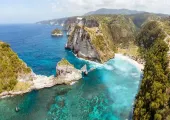10 Best Things to Do in Piazza Della Signoria Florence
Catalogue
- Florence center from 13th century
- Historical events in “L-shaped” piazza florence
- Excavated ruins of the roman theatre
- Loggia dei lanzi
- Statue of david florence
- Statues of piazza della signoria
- Fountain of neptune
- The bonfire of the vanities
- Bargello palace & national museum
- Orsanmichele
- Gucci museum
- Architectures circles around
- Shopping and dining nearby
Show More
The Piazza della Signoria is among the top important squares in Florence. Located in the heart of the city and dominated by the large city hall, the Piazza della Signoria is also known as the Palazzo Vecchio. Overlooking one wing of the Uffizi Gallery, the Piazza della Signoria is one of the primary meeting points for both locals of Florence and tourists who come to this mesmerizing romantic city. Concerts, fairs, rallies are constantly being hosted in the Piazza della Signoria all through the year. And the square is bustling with activity and excitement round the clock.
The square was busy even before the Renaissance palace was converted to the headquarters for the government. The crux and the heart of the city of Florence, Piazza della Signoria is undoubtedly the best places to visit in Florence.
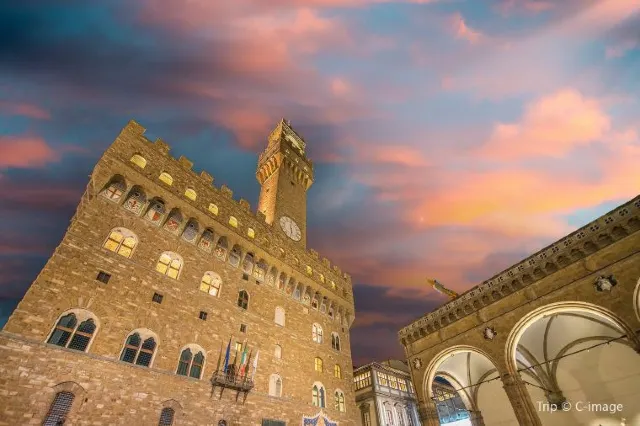
The most famous square of Florence, the Piazza della Signoria began to take shape in the mid- to –late 13th century as the Guelphs were successful in defeating the Ghibellines to take control of the city. The L shape of the Piazza della Signoria and its lack of uniformity in its surrounding areas is the result of the Guelphs leveling many of the palazzi of the rivals. The piazza means a public square or market place in Italian. The Piazza della Signoria gets its name from the towering Palazzo Vecchio, whose original name is Piazza della Signoria.
The Piazza della Signoria has been the political center of Florence since the 14th century, which was when houses of prominent families had to make way for the new square. An epicenter for ceremonial events, festivals and rallies ever since, you are sure to find several iconic and famous tourist attractions. Some of the attractions are the Palazzo Vecchio, Uffizi Gallery, the Neptune Fountain, Loggia dei Lanzi, and Statue of David Florence.
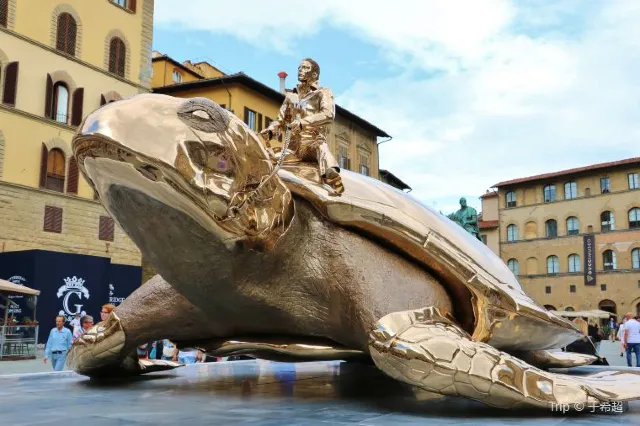
Just as the whole of Italy is seeped in history, so is the Piazza della Signoria. It is called so because of the Signoria, the ruling body of the Republic of Florence from the Middle Ages to the Renaissance. The Signoria was a group comprising of nine men known as priori chosen randomly from the guilds of the city of Florence for two months at a stretch. The vicinity of Piazza della Signoria has been an important and prominent square in the ancient Roman times. It was surrounded by a semi-circular theatre, Roman baths, and a church. The unusual “L-shaped” of the piazza is a testimony to the series of historical events that began from the second half of the 13th century.
Two warring factions, the Guelphs and the Ghibellines were fighting for the city. And when the Guelphs finally took over, they demolished and razed about 36 houses and towers of the rival group to the ground. The Guelphs also forbade anyone from building a single thing on the so-called “damned “land. The salt was strewn all over it to make sure that not even a blade of grass would grow. That paved the way for the square that we see today. Since early times, Florence has been a center for an active and enterprising community that would characterize its long history.
The Piazza della Signoria has been the torchbearer of the civic life in the city in contrast to the religious center that surrounds the cathedral. The focal point of the Florence government, the square has been witnessing important events through centuries, public executions and visits by prominent kings and queens. When the bells with the Tower of Palazzo Vecchio ring, the Florentines gather to listen to the new laws that govern them or run armed to defend their city from any perils. Some of the executions that have taken place in the city have been beautifully portrayed in films like Hannibal. It has also been breathtakingly brought on canvas by artists such as Da Vinci and Botticelli. Some paintings of corpses hanging out from the Palazzo Vecchio are truly amazing and a sight to see.
Since the 1980s, the Piazza della Signoria has been witnessing several excavations which have led to a lot of revelations about the Roman era, Bronze Age, etc. Under the Palazzo Vecchio lies the ruins of the Roman theatre of Florentia and many other ancient layers of the city. Excavation work had been administratively closed in 2009, and the sites are now open to tourists to visit. It is now possible to visit and go back in time history. Tours are generally given in Italian, and you need a reservation before your visit.
Orcagna originally designed the elegant Loggia dei Lanzi that sits to the right of Palazzo Vecchio and functions as an open-air sculpture gallery in 1376. The curved arches spell the classic and ethereal beauty of the Renaissance. The imposing statue of Perseo holding the head of Medusa by Benvenuto Cellini is a stark and gross reminder of what happened to those who crossed the Medici. Along with the Giambologna’s Rape of the Sabines, these two beautiful sculptures found under the arches of the Loggia dei Lanzi are the highlight of the place. Right behind the Loggia dei Lanzi, is the Uffizi Gallery (also known as the Galleria degli Uffizi) one of the top art museum’s in Italy.
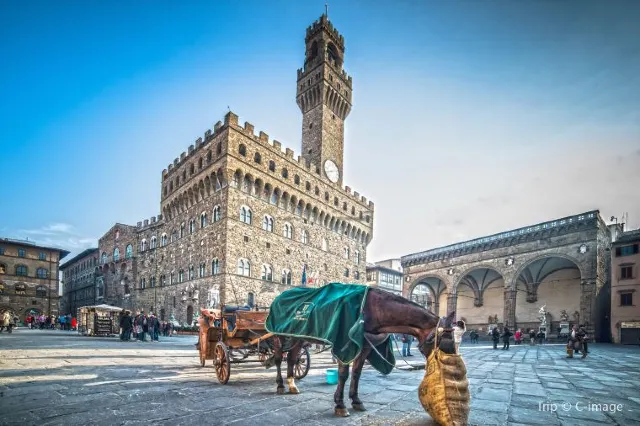
The story of the Statue of David Florence begins with a block of stone that was brought to Florence by boat across the Mediterranean and was stored for several years waiting to be carved. At 5.50 meters high, this block of marble was called a “giant” with little success by Agostino di Duccio and Antonio Rossellino to carve it into twelve figures. The Opera del Duomo of Florence finally commissioned the project to Michelangelo in 1501, which sparked a lot of curiosity in the art circles then. It was shocking to know that a genius as Michelangelo was isolating himself to make this sculpture. He sculpted it from September 1501 to May 1504 that resulted in the Statue of David Florence, the icon of the Renaissance with size and proportion of enormous dimensions. The Statue of David Florence is considered the zenith of sculptural work of Michelangelo. The Statue of David Florence is in the Academia Gallery of Florence. In 1910, the statue that was exposed to the elements in Piazza della Signoria was transferred to the Accademia Gallery to avoid further deterioration, and the David that is seen currently seen at the Piazza della Signoria is a copy of the original.
Statues by different artists, some of the most famous in Florence ordain the square and stand right adjacent to the Loggia dei Lanzi. It serves as an outdoor sculpture gallery for the Piazza della Signoria. Most of the statutes located here are copies of the original which have been moved indoors. Other than the Statue of David Florence, the must-see sculptures on the square are Baccio Bandinelli;s Heracles and Cacus, two statues by Giambologna- the gorgeous Rape of a Sabine and the equestrian statue of Grand Duke Cosimo I, Cellini’s Perseus and Medusa. Ammanati designs the Neptune Fountain.
In the 15th and 16th century, Florence found sculpture to be a very integral way of promoting the image of the government. The bronze statue of Perseus that holds the bloody head of Medusa is one of the best-known sculptures in the open-arched Loggia. Cellini himself has chronicled the trouble he went through while putting the sculpture together.
The Rape of the Sabine Women by Giambologna is another dynamic intertwined figure of this famous sculpture. It was named only after the Roman legend had carved the masterpiece. The artist had originally intended to represent three interaction figures in motion, a mature man, a youth, and a gorgeous woman that would be taken by the younger man from the weaker and older one. The work is skilled and beautifully carved out of just one single piece of marble. This work stands as resplendent as Michelangelo’s David. All the statues in the Piazza della Signoria are a simple exhibition of the talents of all the sculptors of that era.
The most impressive monument Piazza della Signoria and the centerpiece of the square is the Fonte di, Piazza. The Fonte di Piazza was created by Bartolomeo Ammanati to celebrate the wedding of Francesco de’ Medici, the son of Cosimo I to Princess Johanna of Austria in 1565. The marriage was a sign of the rise of Medici into the ranks of the great ruling houses of Europe. When Francesco was to receive the title of the Grand Duke- the fountain which had already begun was turned into an elaborate affair. So Ammanati and his craftsmen worked furtively towards making this the largest fountain in Florence. The fountain has Neptune surrounded by four horses and three tritons. Well, the work was done at such speed that when it was finished, the Florentines jeers “Ammanato, the bel marmot hai rovinato” which means Ammanato, what lovely marble you have ruined!
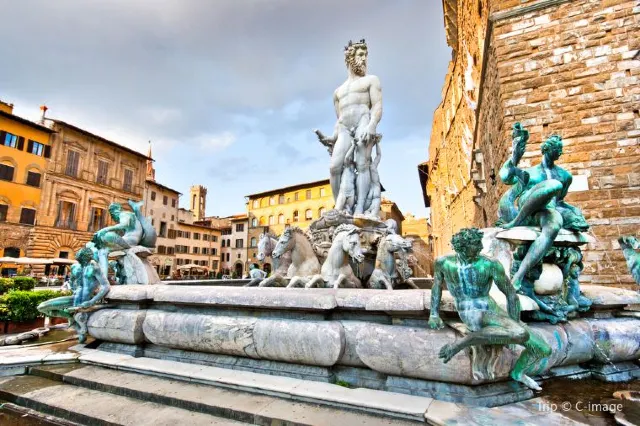
Apart from the statues and the building that surround it, Piazza della Signoria is known for the site of the infamous Bonfire of the Vanities of 1497. During this bonfire, followers of the radical Dominican friar Savonarola burnt thousands of objects (books, art, sculptures and musical instruments) that were deemed sinful. Exactly a year later, after stirring the ire of the Pope, Savonarola who initiated the bonfire was sentenced to death in a similar bonfire. There is a plaque on the Piazza della Signoria that marks the spot where the public execution took place on 23 May 1498.
The enormous and massive Bargello Palace houses the National Museum currently. It contains an entire room dedicated to Michelangelo and another to the glazed terra cotta relief artifacts of Giovanni della Robbia. The artistry of Donatello is represented by a lot of his marble and bronze sculptures.
There are also other works by great Tuscan artists like Bevenuto Cellini and models by Brunelleschi and Ghiberti. The models of Brunelleschi and Ghiberti are models of the proposals they illustrated for the doors of the baptistery. You can also find enamels, goldsmithing, and other fine Tuscan crafts to fill galleries of the museum.
The church of Orsanmichele is also known as San Michele in Orto and dates from the 14th century. It originated as a trading hall and gradually became a church. The exteriors of the place are distinguished by the delicate stone motifs in the window archers and also in the niches. They contain the statues of the patron saints of various Florentine guilds by renowned artists like Ghiberti, Donatello, and Giambologna. An extremely beautiful and gorgeously carved marble container inside the place holds an acclaimed and venerated painting of the Madonna by Bernardo Daddi which dates back to 1347.
Well if you are a lover of brands and would love to dig deep into the history of one of them, then this place is a must-visit. The Gucci Museum in Florence was inaugurated in 2011 when the eponymous fashion house turned 90. To marks its 90th anniversary, the fashion house launched a museum that tells the story of the Italian fashion brand and leather good manufacturer. It chronicles its journey from where it started to become the biggest-selling Italian brand that it is today.
Located in the historic Palazzo della Mercanzia which means the Palace of the Merchandise in Piazza della Signoria. The museum contains exhibits of the iconic and exquisite pieces of the brands from bags, clothes, accessories, and many more. It comprises of a series of contemporary art, a library, a cafeteria, a tiny boutique and also the new Gucci Osteria da Massimo Bottura which is a restaurant by a three-star rate Michelin star chef. The horsebit, handbag with a bamboo handle and the Jackie handbag are some of the legendary pieces that you can spot in the museum.
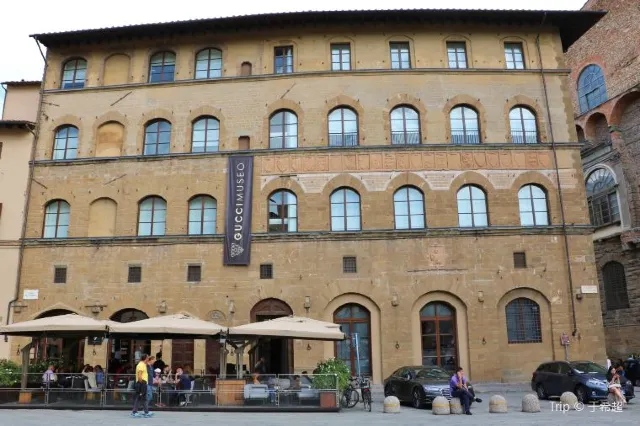
Piazza della Signoria has been the center of the political scene in Florence since the 14th century. The towering Palazzo Vecchio overlooks the square. Savonarola created the scene of great triumphs like the return of the Medici in 1530 and The Bonfire of the Vanities. There is a marble circle that is inscribed on the piazza which highlights the location where he was burned. The Piazza della Signoria is surrounded by nothing but an architecture that resonates the history of Florence, and as you walk around the attractions you will feel the events coming alive in front of you. It is like a walk back in time where you get to experience a whole different era that was characterized by revolution, rebellion, and regard for valour, courage, and integrity.
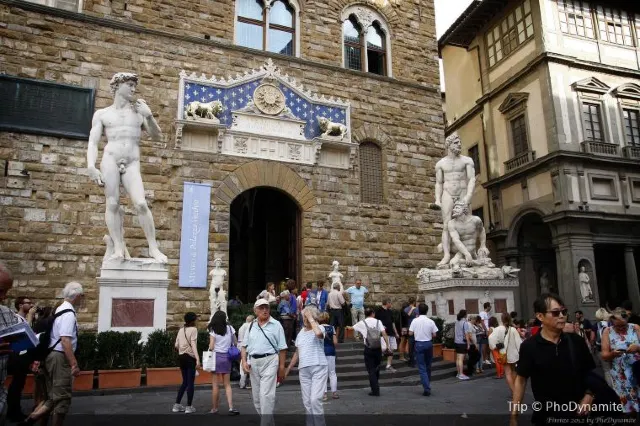
From simple to traditional Florentine cuisine made with local and seasonal produce, Piazza della Signoria is replete with dining options that will satiate your hunger and appease your taste. Classic trattorias, panini bars, pizza corners to Italian fast-food joints, the Piazza della Signoria has a range of places to enjoy some delicious Tuscan food. You could try All Antico Vinaio for fast food, Salumeria Verdi for the paninis and Cacio Vino Trallala for a three-course meal with exquisite wine.
The most famous shopping street around is the Via dei Calzaiuoli that goes from the Duono to the Piazza della Signoria. A great place for window shopping and browse through designer brands like Chanel, Max Mara, and Swarovski. Not all the stores around are expensive so you could explore them and indulge yourself. The Via de’ Tornabuoni is another famous shopping street in Florence that houses several top designer fashion houses. The elegant street runs from Piazza degli Antinori to Ponte Santa Trinita and has been synonymous with luxury and brand shopping.
It has a city hall that is the size of a fortress, and the place can be aptly described as an open-air museum showcasing the finest aspects of the Renaissance era.
With its large arena and stunning display of sculptures and collection of museums and galleries, Piazza della Signoria is a great gathering place for locals and tourists to experience the magic of a city. For those interested in history and architecture, the Piazza della Signoria offers ample opportunity to get a slice of one of the most important eras in time.
Trending Travelogues
Popular Trip Moments
Popular Travel Types
Popular Attractions
Popular Destinations
Recommended Attractions at Popular Destinations







Site Operator: Trip.com Travel Singapore Pte. Ltd.



